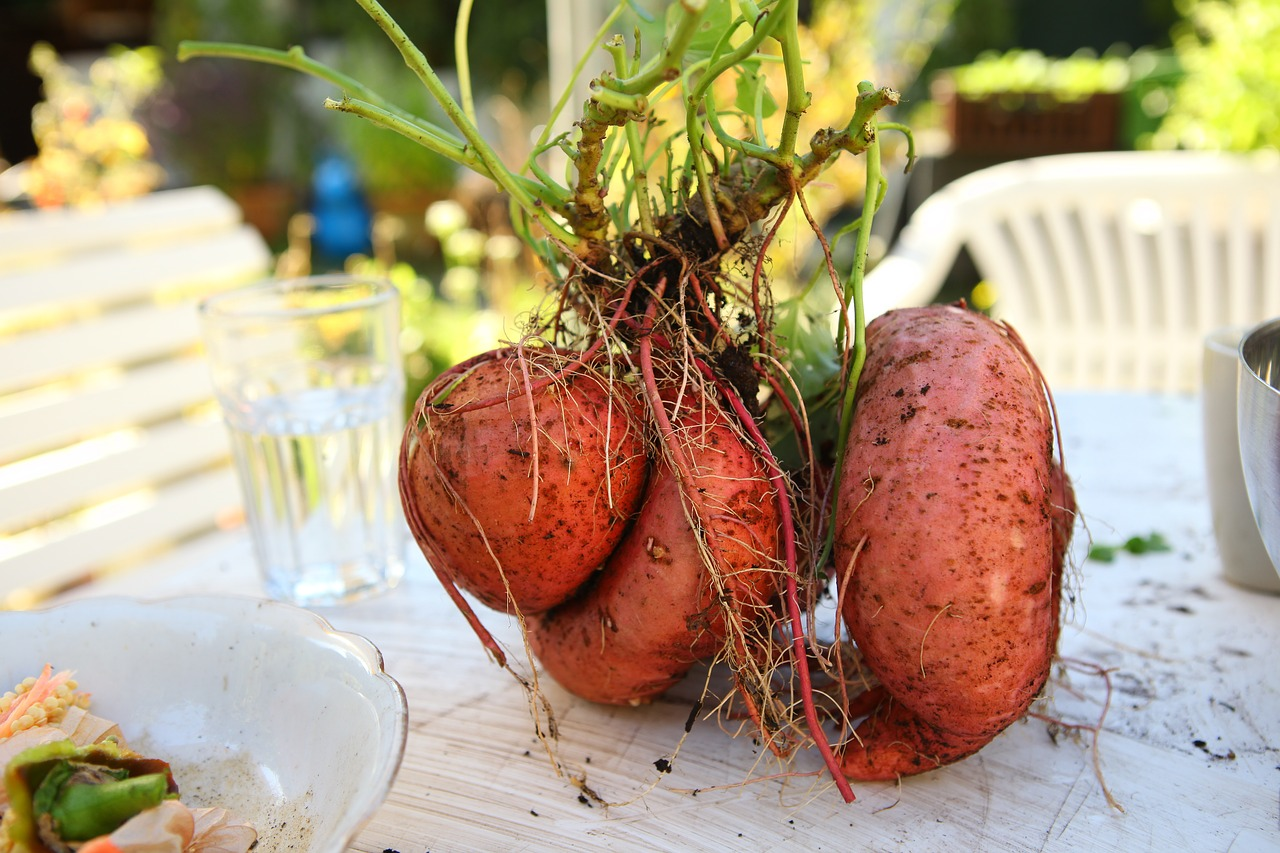
Growing Sweet Potatoes: Tips on Cultivation & Companion Plants
Sweet potatoes are a staple food in many tropical countries. Due to their unique taste and nutrient-rich ingredients, they are now cultivated all over the world. Find out now what you need to consider when planting, caring for and harvesting sweet potatoes in your own garden.
This Article Contains:
- Growing Sweet Potatoes: What You Need to Know
- Sweet Potato Varieties: An Overview
- The Right Location
- Planting Sweet Potatoes: Instructions
- Sweet Potato in Mixed Cultivation: Companion Plants
- Your planting plan with sweet potato
- Caring for & Fertilizing Sweet Potatoes
- Common Pests for Sweet Potatoes
- Harvesting & Storing Sweet Potatoes
- Preparing Sweet Potatoes
- Propagate Sweet Potato
- Frequently Asked Questions About Planting Sweet Potatoes
Quick Overview
Planting Sweet Potatoes: Location, Spacing & Planting Depth
- Light requirement: sunny
- Nutrient requirements: high
- Water requirement: high, no waterlogging
- Soil: loose, sandy and rich in humus
- Pre-cultivation: from January
- Planting out: after the Ice Saints in May, earlier in the greenhouse
- Planting depth: plant 10 cm/3.9 in long cuttings two-thirds full, plant whole tubers about halfway into the soil
- Planting distance: 40 cm/15.7 in within, 30 - 50 cm/11.8 - 19.7 in between the rows
- Good companion plants: summer flowers, marigolds, broad beans, carrots, chamomile, nasturtium, caraway, mint, chard, horseradish, kohlrabi, radishes, spinach and lettuce
Growing Sweet Potatoes: What You Need to Know
Contrary to its name, the sweet potato (Ipomoea batatas), also known as batata, is only distantly related to the conventional potato. Just like the water spinach (Ipomoea aquatica), it belongs to the bindweed family (Convolvulaceae). There are not many members of the bindweed family in the vegetable garden, but there are some decorative bindweeds that are often planted in ornamental gardens.
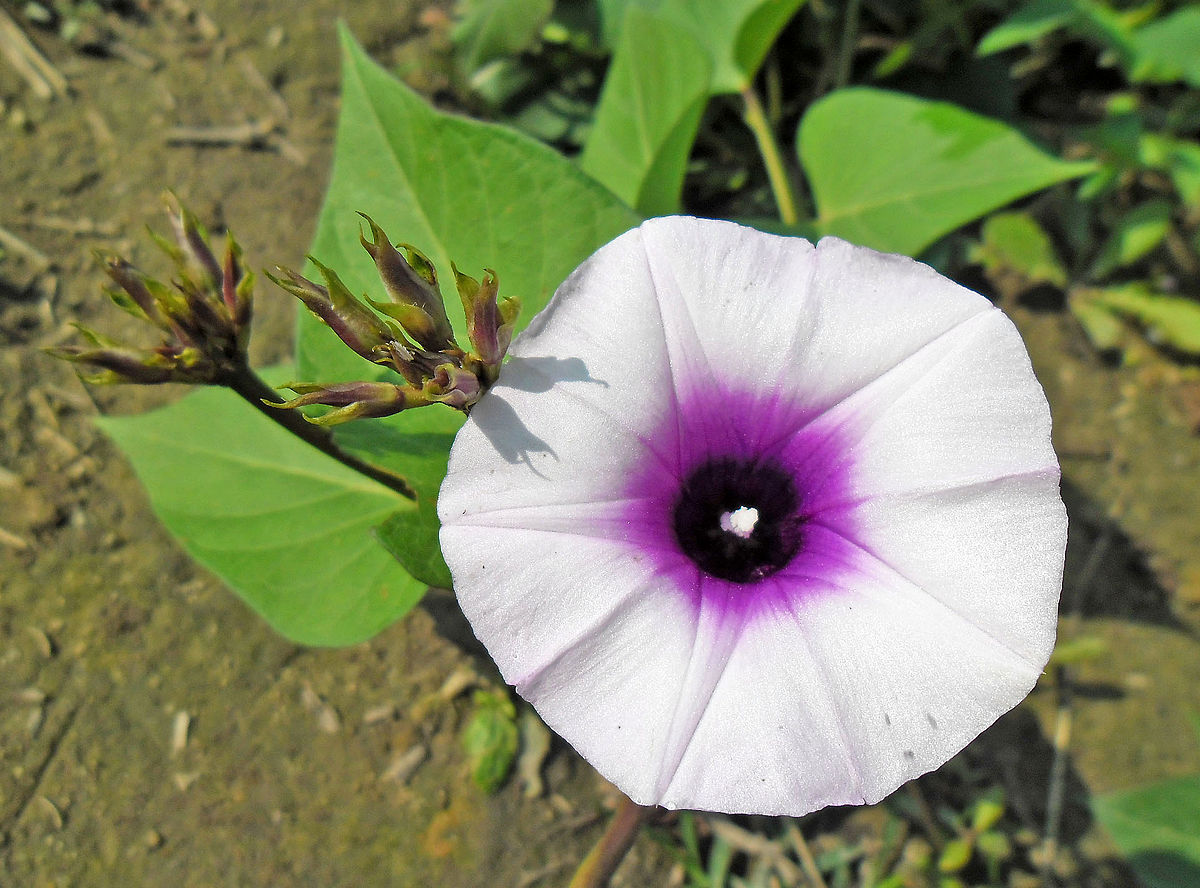
How Do Sweet Potatoes Grow?
Sweet potatoes are storage roots and are used to survive unfavorable climatic conditions. Under good growing conditions, long shoots with heart-shaped, stalked leaves sprout from the tubers. The lush foliage can then convert solar energy into sugar, which in turn is stored in the storage roots. In the tropics, sweet potatoes can grow up to 30 cm/11.8 in long and weigh several kilograms. Sweet potatoes are more filling than potatoes as they have a higher nutrient density. They also contain many important minerals such as sodium, potassium, calcium and magnesium. Especially in poorer regions of Africa and South America, the nutrient-rich tubers are cultivated as a food source.
Sweet Potato Varieties: An Overview
Sweet potatoes can be colored differently depending on the variety. They come in white, yellow, orange, pink or purple.
- ,Beauregard' is probably the best-known sweet potato variety in Europe. It originally comes from South America and forms very long shoots. You will certainly recognize the reddish skin and orange flesh from the supermarket. Its sweet taste is reminiscent of carrots and it also contains a lot of beta-carotene.
- Another popular sweet potato variety is 'Bonita'. It has white to pale pink skin and white flesh. 'Bonita' produces slightly smaller tubers that are very suitable for baking.
- The variety 'Evangeline' is suitable not only as a vegetable but also as an ornamental plant in the garden due to its wine-red leaves. It develops red-skinned tubers with strong orange flesh. The high sugar content gives it a particularly sweet taste, so it can also be used in desserts.
- Another interesting variety is 'Murasaki' from Japan. The pink skin contrasts beautifully with the white flesh. It is often made into puree or potato chips and has a taste reminiscent of chestnuts.
- The tubers of the 'Sakura ' variety are purple through and through. They are particularly rich in antioxidants due to the coloring anthocyanins. In Japan, the steamed leaves mixed with rice are considered a real delicacy. The intense color of the tubers is retained during cooking.

Find out More About the Varieties
In our library you will find information on the individual varieties with cultivation periods, tips on planting and harvesting. You will also find good and bad companion plants to help you plan a mixed crop.
View Library Now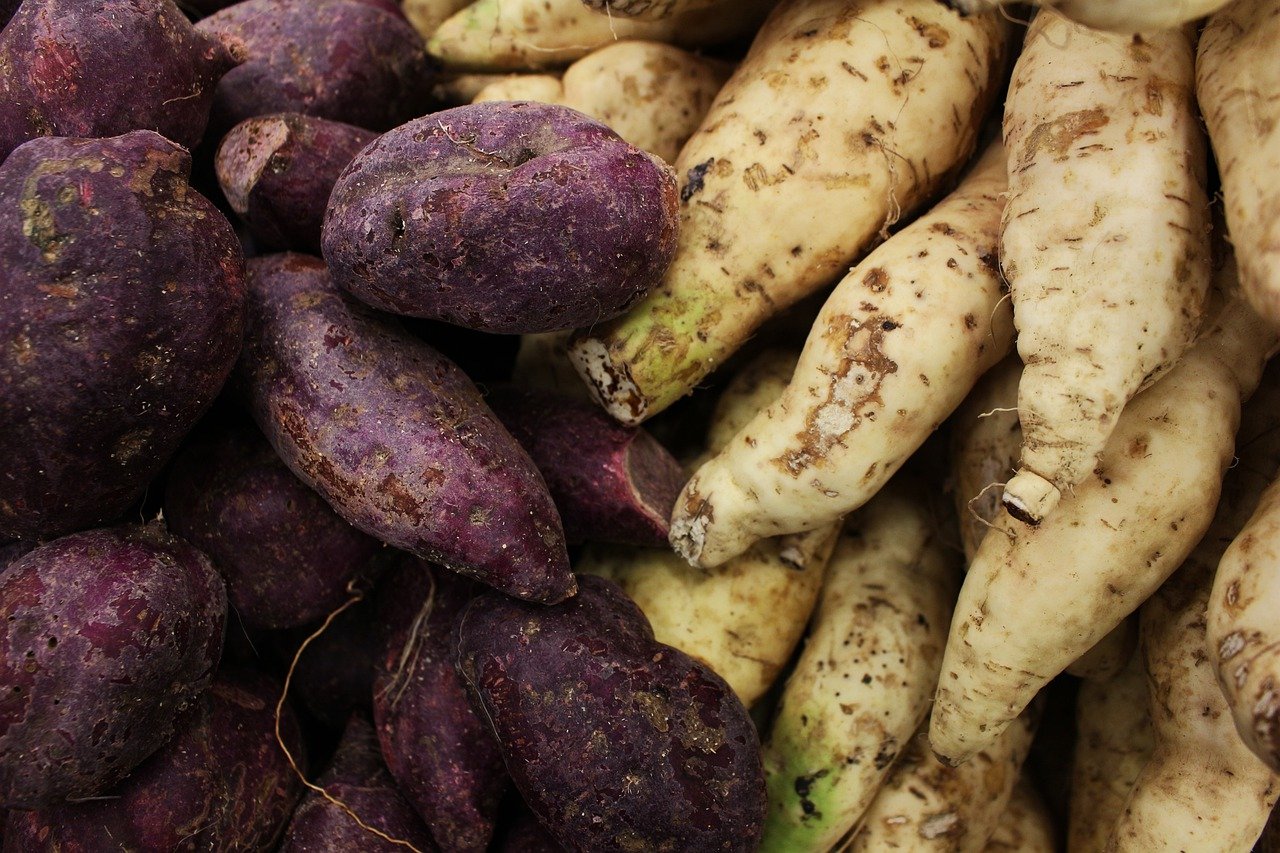
The Right Location
The sweet potato is a heavy feeder. However, it does not like soil that is too heavy or waterlogged. The plant grows best in loose, sandy and humus-rich soil. If necessary, you can gently loosen your soil with a digging fork without turning it over. The sweet potato can also tolerate a good dose of nutrients, more information can be found under "Caring for and fertilizing sweet potatoes". In our latitudes, the sweet potato is an annual, as it is not hardy. Reserve a sunny and sheltered spot for it, e.g. on the balcony, in a raised bed or in a greenhouse.
Can You Grow Sweet Potatoes in Pots?
When growing in pots, make sure there is sufficient soil volume so that the daughter tubers can develop undisturbed. Choose a container with a capacity of at least 30 L/63 Pt. In mild regions, cultivation can also be successful outdoors.
Planting Sweet Potatoes: Instructions
Sweet potatoes are only propagated vegetatively, as the seeds germinate very poorly. As a rule, individual tubers are germinated and then later transplanted themselves or as cuttings. To allow the tubers to develop enough green leaves before planting, you can start pre-cultivation as early as January. Simply place the sweet potatoes in a tub or box with loose soil and put them in a bright spot. If the soil is evenly moist, the first shoots will sprout after just a few weeks. Alternatively, you can also place the tubers about halfway in water, which will also help them to reliably form roots and leaves. When the shoots are around 20 - 30 cm/7.9 - 11.8 in long, it is time to plant them.
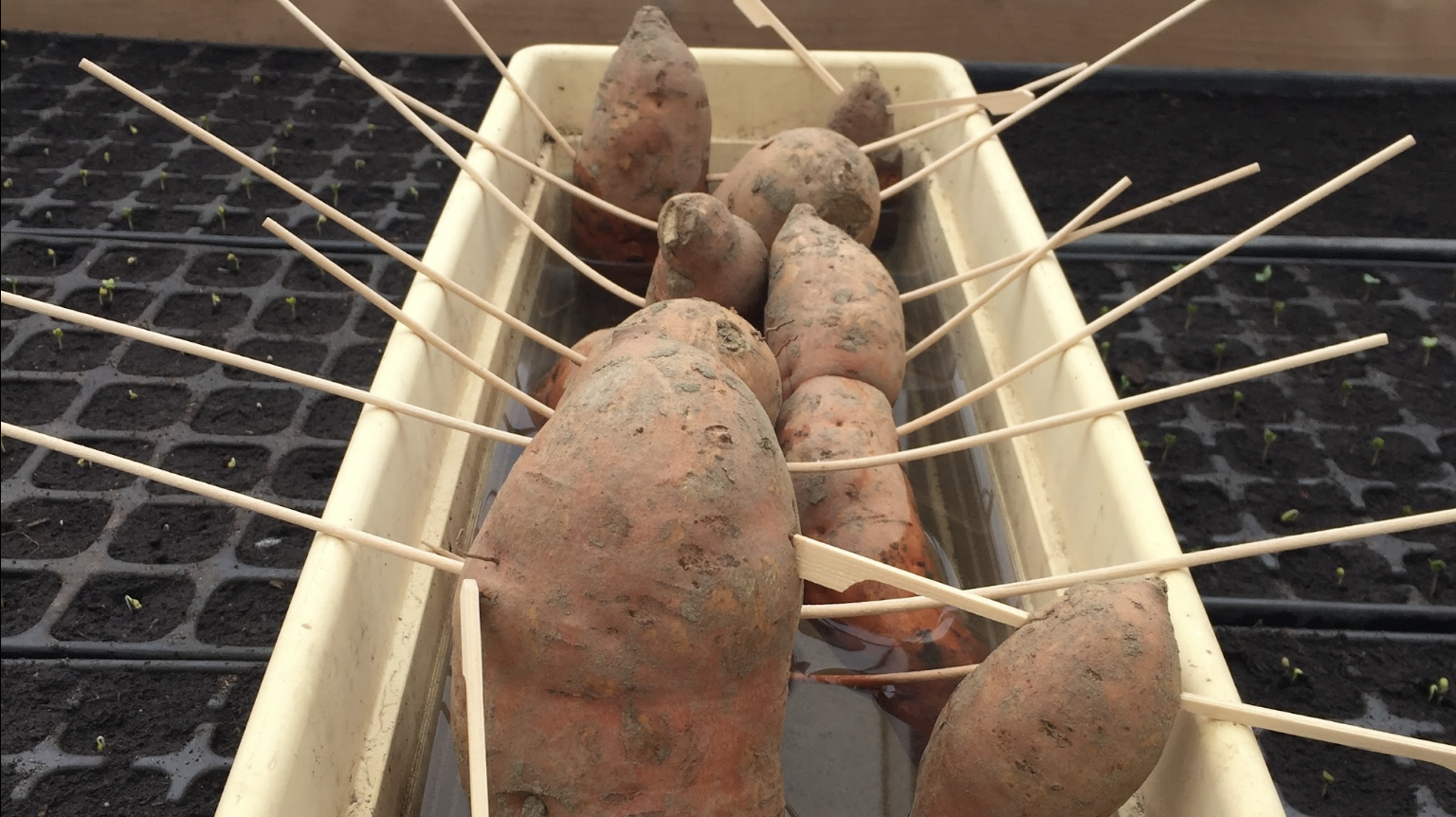
When to Plant Sweet Potatoes?
As sweet potatoes are very sensitive to the cold, they should only be planted out in the open after the Ice Saints in mid-May. Under favorable conditions, they can be transplanted into the greenhouse as early as April. Now you can either plant out the whole bulb or cut off cuttings. Remove the lower leaves from the approximately 10 cm/3.9 in long cuttings so that two thirds protrude into the soil. If you want to be on the safe side, you can put the shoots in water first and plant them out as soon as they have formed roots. When planting the whole bulb, about half of it should be sticking out of the soil. Ensure a planting distance of 40 cm/15.7 in within the bed and 30 - 50 cm/11.8 - 19.7 in between the rows. A small handful of horn shavings per plant provides good long-term fertilization.
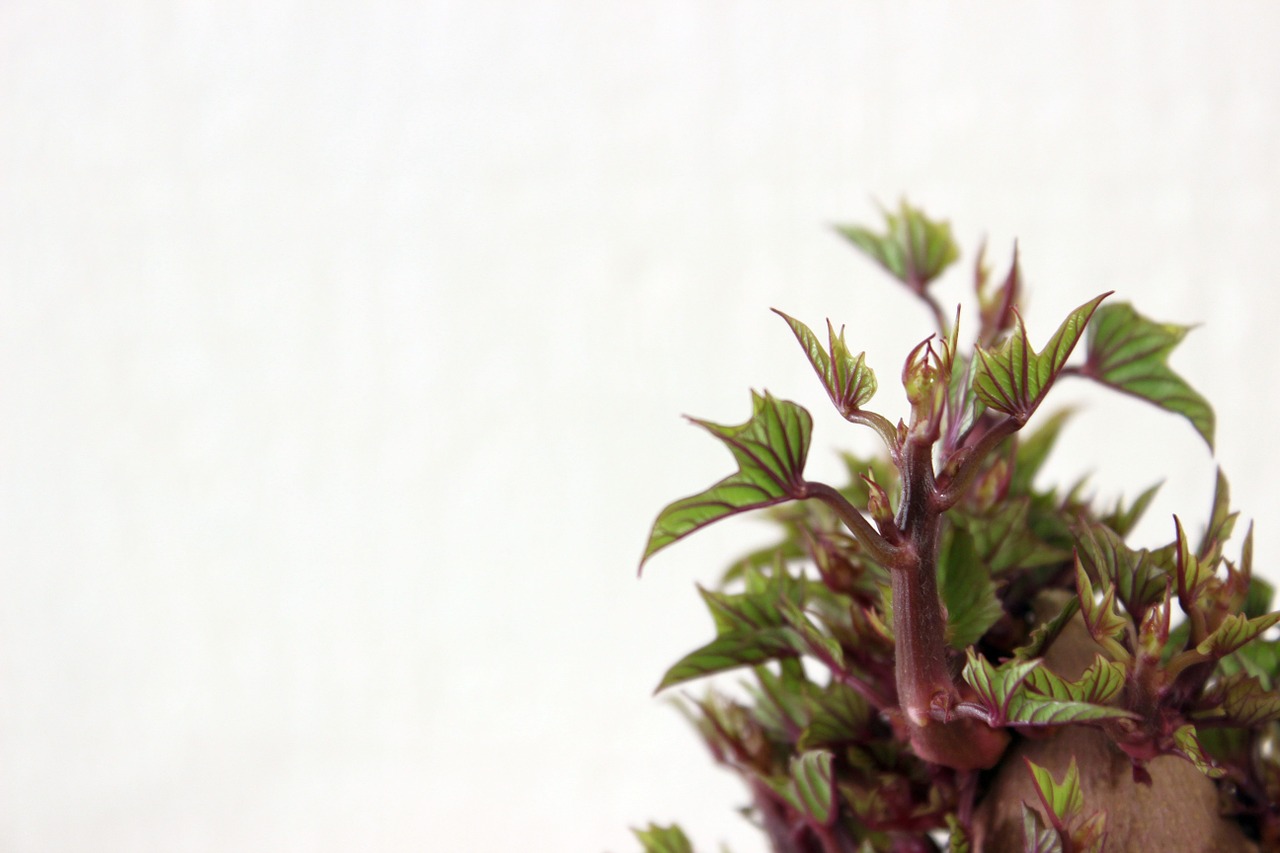
Sweet Potato in Mixed Cultivation: Companion Plants
All plants in the bed benefit from planting in a mixed culture. Good companions promote each other's growth. Planting good companions next to each other can increase your yield. It also increases the diversity of plants in the bed, making them more resistant to diseases and pests. You should also follow successin planting and crop rotation rules to maintain soil fertility.
Good & Bad Companion Plants
- Good companions: summer flowers, marigolds, broad beans, carrots, chamomile, nasturtium, caraway, mint, chard, horseradish, kohlrabi, radishes, spinach and lettuce
- Bad companions: beetroot, celery, pumpkin, potatoes, physalis, tomatoes, eggplants, peppers, Jerusalem artichokes and sunflowers
Crop Rotation & Succession Planting
As a heavy feeder, you should make sure you take a three-year break from growing sweet potatoes. This allows the soil to regenerate and prevents it from being depleted. As there are hardly any other vegetables in the bindweed family, you don't have to worry so much about the rotation of plant families here. Just avoid the closely related water spinach. For this reason, sweet potatoes are a good crop rotation and succession planting element that adds variety to your planning.
Your planting plan with sweet potato
Caring for & Fertilizing Sweet Potatoes
Sweet potatoes need evenly moist soil in order to grow reliably. So make sure you water regularly during longer dry periods. Soil moisture is crucial for plant development, especially when growing in pots. A good layer of mulch can help to reduce soil evaporation and keep the roots nice and moist. You should also make sure you provide sufficient nutrients. The heavy-feeding batatas will appreciate a bed preparation with mature compost or manure. In the case of manure, it is usually advisable to work it into the bed for next year in the fall so that it is sufficiently rotted in the spring. If you already have rotted manure, you can also add it later. Sprinkle a small handful of horn shavings into the planting hole when planting to ensure good long-term fertilization.
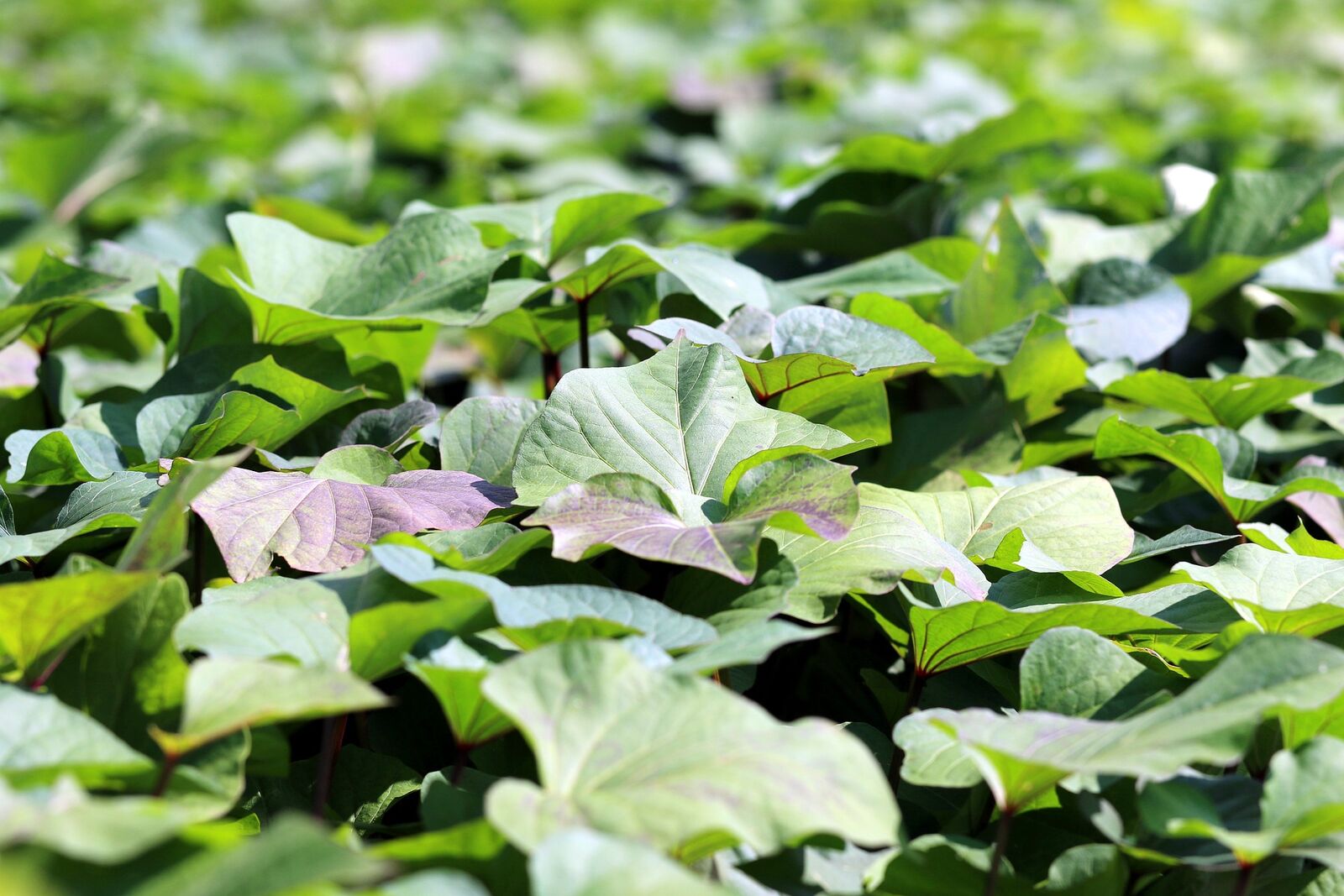
Attaching a Climbing Aid for Sweet Potatoes
Sweet potatoes generally do not need a climbing aid in the traditional sense, as is the case with some other climbing plants. Rather, they are ground-creeping plants whose tendrils spread horizontally along the soil surface instead of climbing vertically. However, a climbing aid can be useful in certain growing situations to save space or to keep the plants clean. In a small garden or raised bed crops, trellises can be used to control the spread of sweet potatoes and improve exposure.
Common Pests for Sweet Potatoes
Sweet potatoes are not particularly susceptible to diseases and pests. Occasionally, slugs and snails can attack the tender green leaves. Check the plants regularly for infestation and collect the animals. Special slug fences or slug collars can help to keep the slugs away from inside the bed. If you have a lot of voles in your garden, it is better to grow sweet potatoes in a container on the patio or balcony. Make sure that the pot has sufficient volume and is watered regularly.
Harvesting & Storing Sweet Potatoes
You can harvest your sweet potatoes from October to September. As soon as the tubers are ripe, the leaves turn yellow, indicating the end of their development. If you want to make the most of the growing season, you can wait until October to harvest. However, as the heat-loving plants die at temperatures below 10 °C/50 °F, you should not wait too long before harvesting. A thick layer of mulch can extend the harvest time slightly. Allow the dug tubers to air dry for about two days before eating them. The tubers can then be stored for a short time in a cool, dry room. However, consume them as soon as possible, as the risk of rotting increases over time. Unlike potatoes, sweet potatoes are only suitable for storage to a limited extent.
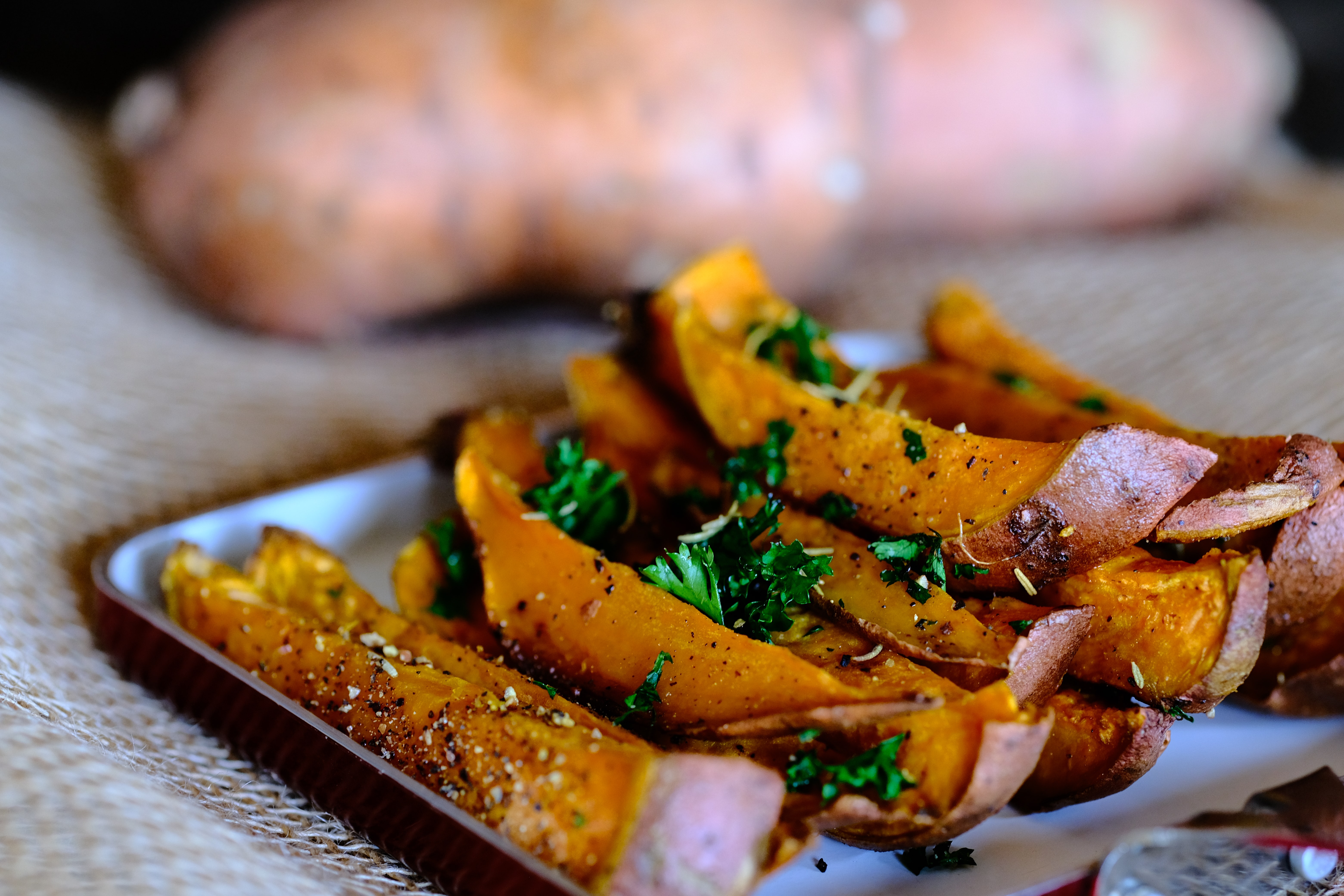
Preparing Sweet Potatoes
Sweet potatoes can be used in many different ways in the kitchen. You can bake them as baked vegetables or chips, for example. Simply peel the sweet potatoes and cut into thick strips. Place on a baking tray, mix with olive oil, salt and any spices you like. Then cook in the oven at 180 °C/356 °F for approx. 25 minutes. Now bake for another 5 minutes at 220 °C/428 °F (grill setting) until crispy. Turn the fries once during this time so that they are crispy on both sides. Alternatively, you can also cook sweet potatoes in a pan and then process them into puree, for example. Delicious sweet potato chips are also very popular.
Did you know? Sweet potato leaves are also edible and can be prepared like spinach.
Propagate Sweet Potato
Sweet potatoes are only propagated vegetatively , as the seeds germinate very poorly. There are several ways to do this, but they all start with a sweet potato tuber. These can be germinated either whole or halved. You can also decide whether you want to sprout them inwater or in soil. The tuber should be half covered. In a jar of water, toothpicks can help to suspend the sweet potato in the water in a similar way to avocado pits. If you cut it in half, allow the cut to dry out a little before continuing. Then place them in a bright place with temperatures around 20 °C/68 °F. After a few weeks, the bulb will sprout and you can either plant it as it is or cut cuttings from it. To do this, cut shoots about ten centimetres long and remove the lower third of the leaves. You can now place the cuttings in water or plant them directly in pots. If you want to propagate your own sweet potatoes, you can plant a few harvested tubers as described above and overwinter them indoors. Alternatively, you can cut cuttings from the plants in late summer, which will then also overwinter in pots. The plants should overwinter in a bright, warm place and be watered regularly.
I hope you've now got the urge to grow your own sweet potatoes! If you have any questions or comments, please write to us at magazin@fryd.app.
Would you like to receive helpful gardening tips all year round and plan your own beds in the best possible way? Then register here or download the Fryd app for Android or iOS.
Fryd - your digital bed planner
Cover picture: gartengemuesekiosk on pixabay.
Annabell
Current Topics in the Community

#red , #tuesday

Liked 1 times
#testpostcount

Dec 2025
Popular Articles

Companion Plants for Carrots: What (Not) to Plant With Carrots

Companion Plants for Celery : What (Not) to Plant With Celery?

Strawberry Types: List of Best Strawberry Varieties

Companion Planting With Strawberries: Companion Plants and Planting Plan

Basil Varieties & Types at a Glance

What to Plant With Cabbage: Good and Bad Companion Plants

Fertilizing Strawberries: Home Remedies & Natural Fertilizers at a Glance

Growing Sweet Potatoes: Tips on Cultivation & Companion Plants

Companion Plants for Kitchen Herbs: Chives, Parsley & Co

What Herbs Can Be Planted Together?
FAQ
Sweet potatoes are sensitive to the cold and should only be planted outdoors after the Ice Saints (from mid-May). If you have a greenhouse, you can plant sweet potatoes as early as April.
What are good companion plants for sweet potatoes?
Good companion plants for sweet potatoes include summer flowers, marigolds, broad beans, carrots, chamomile, nasturtium, caraway, chard, kohlrabi, spinach and lettuce.
How do I make my own sweet potato cuttings?
You can easily germinate sweet potatoes in water or soil. After a few weeks, the tubers will sprout and you can make cuttings from the sprouts.
When do you harvest sweet potatoes?
Sweet potatoes are harvested between September and October. Ripe sweet potato plants turn their leaves yellowish, which tells you the best time to harvest them.
How are sweet potatoes propagated?
Sweet potatoes are not propagated by seed. They propagate vegetatively via shoots. You can easily make your own sweet potato cuttings.